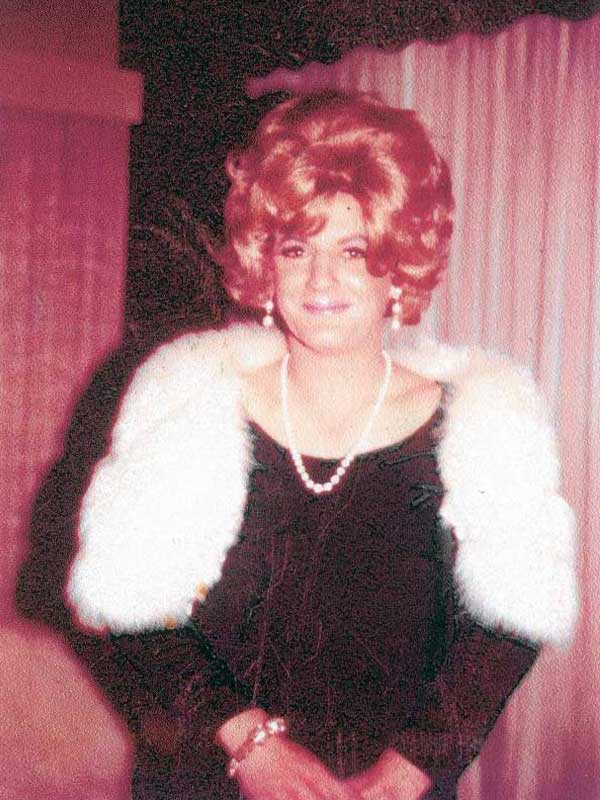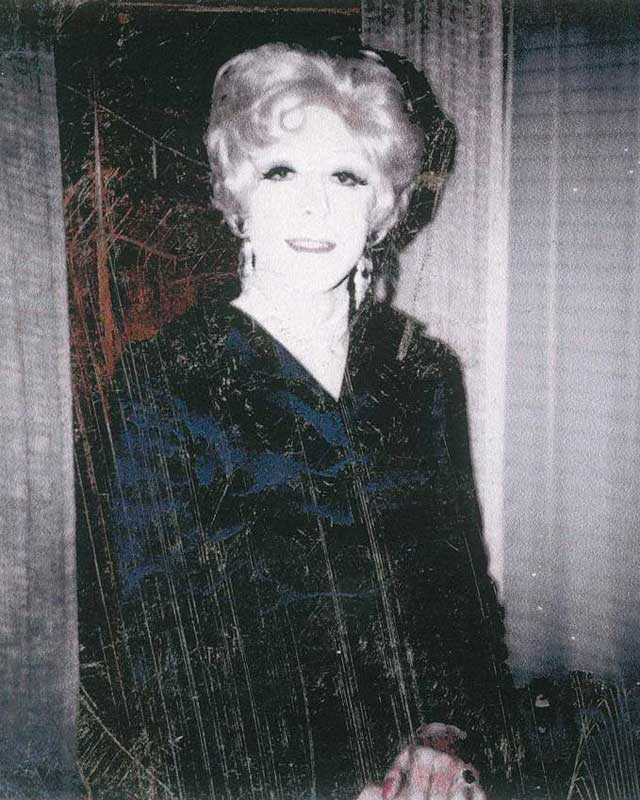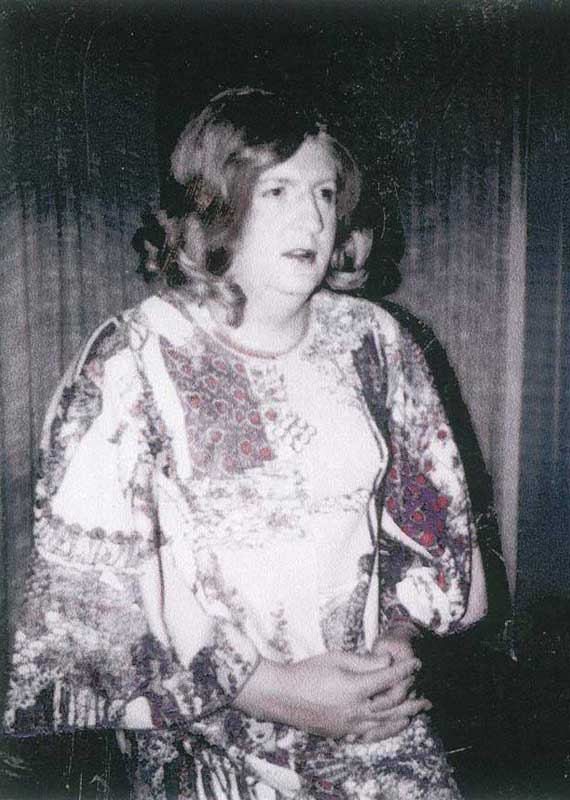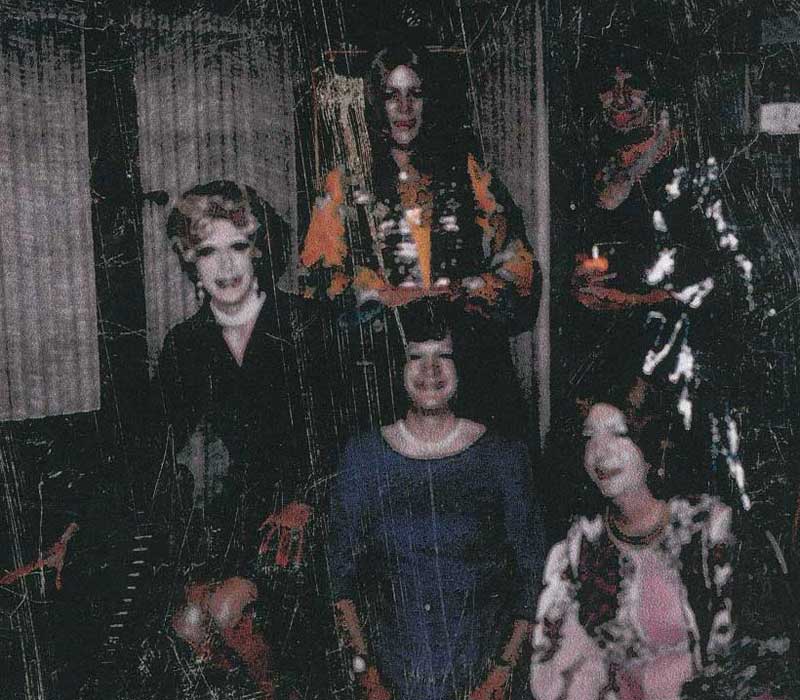Seahorse's History
The Definitive History of the Seahorse Society - Part 1
This is page includes some introductory comments, and information about the earliest attempts to organise a cross-dressing club in Australia, and the start of the Seahorse Society of Australia.
Introduction
Information for this article has been drawn from researching many sources, including from several articles in back copies of Polare, the Gender Centre's magazine, published between 1993 and 2008, and written by Seahorse members (usually the current President). It also incorporates information from early members, in particular, Di Ward, who had kept documents and magazine articles from as far back as 1975, when she first joined Seahorse. In addition, the observations of a psychiatrist, Dr. Neil Buhrich in his 1976 academic article about Seahorse are also included.
In April 2013, information was received from the founding President, Rosemary abou the early years of Seahorse.
In my role as Membership Secretary, I have had access to a large amount of membership records, applications and other correspondence dating back to the 1980's. In December 2014, I found an article by Pauline Worner, one of the founders, in a Feminique issue No.15 (1977).
This article follows the history of Seahorse from some years before its formation in 1971, through its rapid development as a well-known national organisation, until 1980, when it split into various independent state organisations. The article then follows the history of Seahorse NSW from 1980 to the present day, including looking at how Seahorse currently functions.
Somewhat surprisingly, the details of Seahorse's earliest history in the 1970's have been extremely well documented, much better than the middle years of the 1980's and 1990's.
The Dark Ages: before Seahorse existed
Seahorse's early beginnings date back to about 1967. It was an immensely difficult task given the highly closeted times, when NSW Police could arrest you for just going out in public dressed as a woman. The Vice Squad of the NSW Police, in its quest to eradicate homosexuality from Australia, had the power to check the underwear of a cross-dresser out in public. If you claimed to be going to a fancy dress party in drag, this was acceptable as long as you were wearing men's underwear. If you were wearing women's underwear, you could be charged with an offence, such as disturbing the peace or soliticing. This is laughable by today's standards.
A past member of Seahorse told me about being arrested in the 1960's because she used the women's toilets while dressed as a woman. She said it was a humiliating experience, being arrested and having to face court. The problem that transvestites faced was that the public at large assumed the only reason any man would dress as a woman was to attract a man for sexual reasons, i.e. a homosexual act, which was illegal at that time. Tasmania was reported to have had a somewhat bizarre law, which was that it was illegal for a man to dress as a woman in public at night, but it was legal in the day time. This was confirmed in a letter from a Tasmanian member in a letter dated 1992.
It was around the late 1960's, there was a landmark case, that I recall reading in a newspaper, where a cross-dresser was brought before a senior magistrate's court simply because he was wearing a skirt in public. The magistrate ruled that no law had been broken. As a result, NSW Police's Vice Squad soon stopped arresting public transvestites, as a convictions were now unlikely to succeed. It was a time of major social change, where morality and criminality began to become separate issues.
Enter our Founder, Rosemary
Rosemary, a member of the Beaumont Society in the United Kingdom, had just immigrated to Australia in 1967 and was persuaded to begin the new club by Fiona Cummings (who later became known as Catherine Cumming). Fiona as she was a fellow member of "Full Personality Expression" (FPE), Virginia Prince's transvestite society and the only Australian member. Virginia had founded the first transvestite club in the Western World, initially in Los Angeles, in the early 1950's. In those days, transvestism was considered by society either as perverse or as pornographic. Because of that repressive era, no reputable newspaper in Australia would dare run such an advertisement to promote such a club.
Fiona introduced Rosemary to Pauline, a decorated ex-member of the RAAF, who also was a member of a close support squadron in Korea which had three known transvestite pilots in its ranks. However, soon after Rosemary arrived in Australia and much to her disappointment, Fiona left Australia to work in America.
Pauline was eventually able to contact Joan Kempthorne from New Zealand via a mail order company run by Jack Fischer. Joan knew another cross-dresser, Carole, a ship's officer from the United Kingdom. Pauline and Joan commenced a lively correspondence.
The other official Australian organisation which tried to suppress homosexuals and transvestites at that time was The Australian Post Office, who took it upon themselves to censor what they considered pornographic mail. Rosemary recounted how the Post Office delighted in causing embarrassment, which they did by refusing to deliver anything which could be classified as pornographic and requiring the addressee to go to their sorting office in person. When you arrived they would ask you if you knew what was in the parcel and, in Rosemary's case, she said "Yes... transvestite literature, which is not pornographic", they sheepishly handed it over.
Pauline, Rosemary and Joan began corresponding and finally were able to meet in 1968. Virginia Prince came to Australia and met up with Rosemary and Pauline as a result of this visit she suggested strongly to Rosemary that she should form a club in Australia.
Over dinner Rosemary and Joan decided to take the first step, to run a newspaper advertisement in the Daily Telegraph that was as explicit as possible, in more or less these words: <
"TV enthusiast would like to meet people with similar views and interests".
Rosemary used her own Royal Exchange PO Box for the replies and paid for the advertisement herself. The response was immediate and nationwide. There was one reply asking why there was a need to form a club to watch TV! While some of the thirty replies were keen watchers of Coronation Street, there were some replies from a small number of cross-dressers, enough to encourage them to try again to run an advertisement in the rather bawdy newspaper, King's Cross Whisper. Pauline reported that as a result advertisement brought "some startling creatures out of the woodwork, but fortunately what also appeared was a nucleus of potential members to start a club in Sydney. This included one of our current members, Jill.
There were enough replies from the Sydney area to form a group and in conjunction with Pauline suggested a lunch at the Malaya restaurant in Railway Square Sydney. After much discussion, a framework of security and confidentiality was laid and they set out to meet some new like-minded friends. Rosemary suggested the name "Hippocanthus Society" (hippocanthus being the Latin word for "seahorse"). Pauline said it should be more clear and direct and suggested that it be called "The Seahorse Club" and this was soon agreed.
The name Seahorse was adopted because "it is a rather delightful creature, a trifle slow but with graceful movement and quiet dignity" and because of its "combination, at times, of both gender-roles".
Guidelines were drawn up for the club. It was:
"Dedicated to the needs of heterosexual transvestites who had become aware of the other side of their personality and sought to express it. We do not condemn or judge the areas of homosexuality, bondage, domination or fetishism, these are left to others."
Rosemary then produced a draft constitution, along the lines of that of the UK Beaumont Society, which again was agreed and Rosemary was elected the first Seahorse President.
The first Seahorse Meeting
p>It was agreed that they should hold a meeting one evening soon where everyone could and should dress as we did not at that time know much about each other and this was simple way for each and everyone to show their credentials.
The official inaugural meeting of the club is reported to have taken place in Sydney in May 1971 with four members attending in a vacant flat at Bellevue Hill in Sydney's Eastern Suburbs. Pauline said she knew an estate agent in Bondi who looked after furnished properties and she would see if she could let us use a house for one night at a low or nil rent. Pauline lived up to her word and they all assembled at the house. Only one potential member withdrew at the last moment because as she said her only interest was in ladies underwear and even though Rosemary offered to lend her a dress it was too much for her to dress in company.
The rest of the attendees changed and Pauline went to heat up the frozen TV dinners she had brought only to find that the gas had been turned off. She offered to go out in the street in her female finery and turn it on, which she unsuccessfully attempted to do, encouraged by Julie with shouts of encouragement, such as: "So, you're a bloody engineer... well, get it fixed!" The inaugural dinner ended up consisting of chips, peanuts and Cheezpops.
The evening was a great success and many Polaroid photos were taken. An article in Feminique, the later Seahorse magazine, in 1984, reported that the first meeting was in June 1971 and that six members attended.
Below are some old photos of those who may have attended the inaugural meeting. They may not have been taken on that night, but at other early meetings. They are photocopies of Polaroid photos and are therefore of poor quality. They are, however, the oldest known, existing photographs of Seahorse members.

Rosemary
Click here for a larger photo

Jill
Click here for a larger photo

Name unknown
Click here for a larger photo

Name unknown (possibly Trina)
Click here for a larger photo

Group photo.
Click here for a larger photo
Subsequent Meetings
The next few meetings were held at Rosemary's home in St Ives. Rosemary's wife, Jenny, typed and duplicated the first newsletters. After this Jill, who was at that time still single, offered the use of her home which was situated up the Northern Beaches at Mona Vale and many meetings were held there. At that stage the membership was reported to be 21.
A constitution was drafted during this time and the first committee elected, with Rosemary as Foundation President until 1973.
The early meetings were held in the members' homes and restaurants with private function rooms. Members' homes were usually chosen for their seclusion.
In February 1972, wives and girlfriends of members were allowed to attend club meetings. Later, children and parents were also accepted at meetings.
An article in the Forum Magazine (The Australian Journal of Interpersonal Relations; Editor: Bettina Arndt) written in 1974, features a visit to a Seahorse Meeting, held at Trina's home. The article, entitled "A Night Out With The Boys", is quite detailed, factual and non-judgemental.